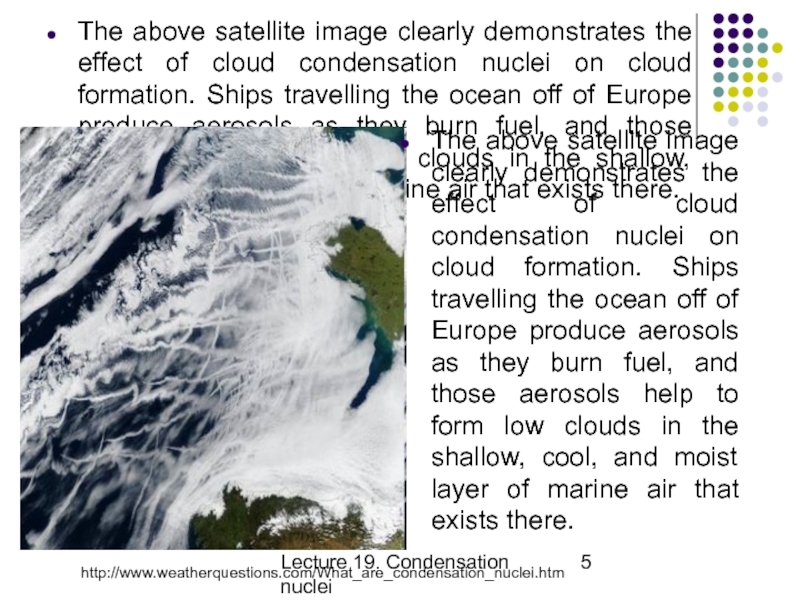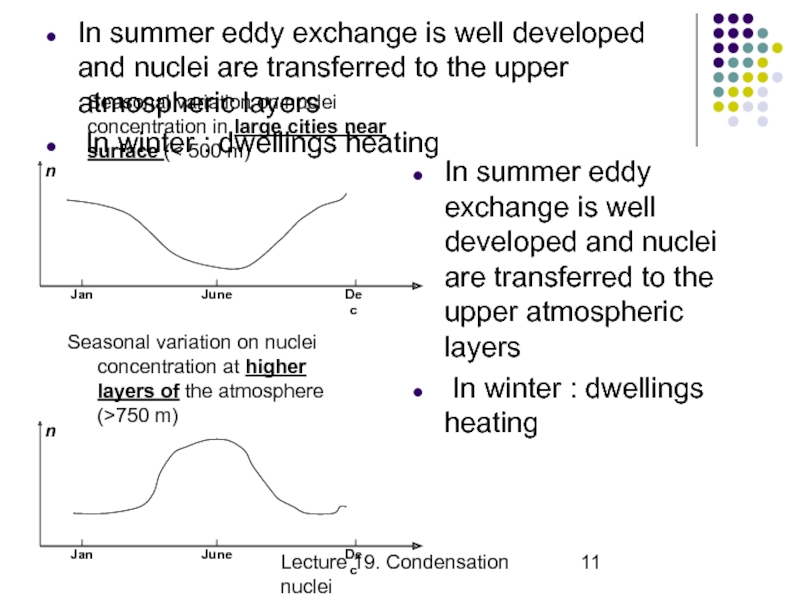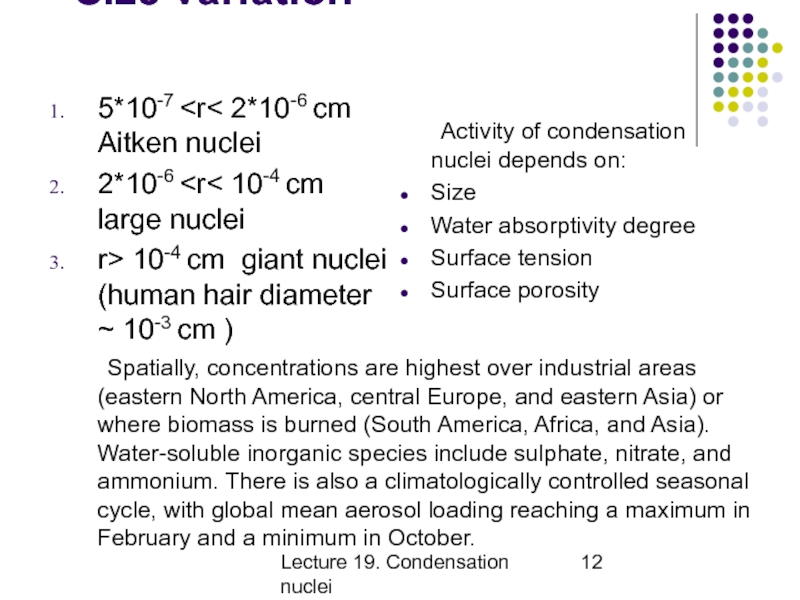molecules
300-400 % supersaturation is needed (see Lec.18)
results obtained in
Wilson cloud chamber are the sameCloud Chamber of
Carl Anderson (ca. 1935)
http://www.orau.org/ptp/collection/miscellaneous/cloudchamber.htm
Starting condensation on
molecules requeres 1200%
supersaturation.
































